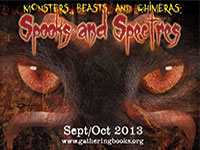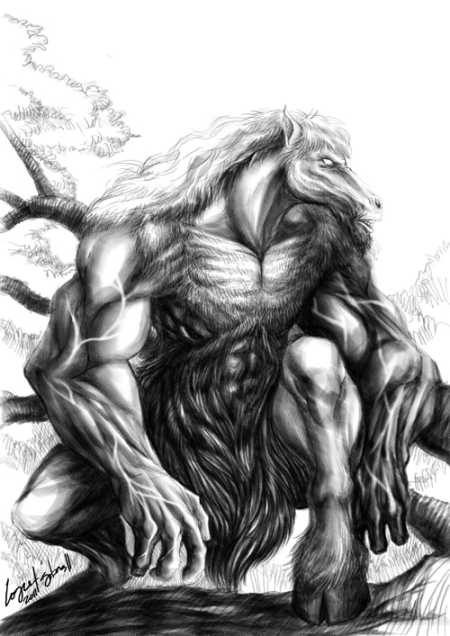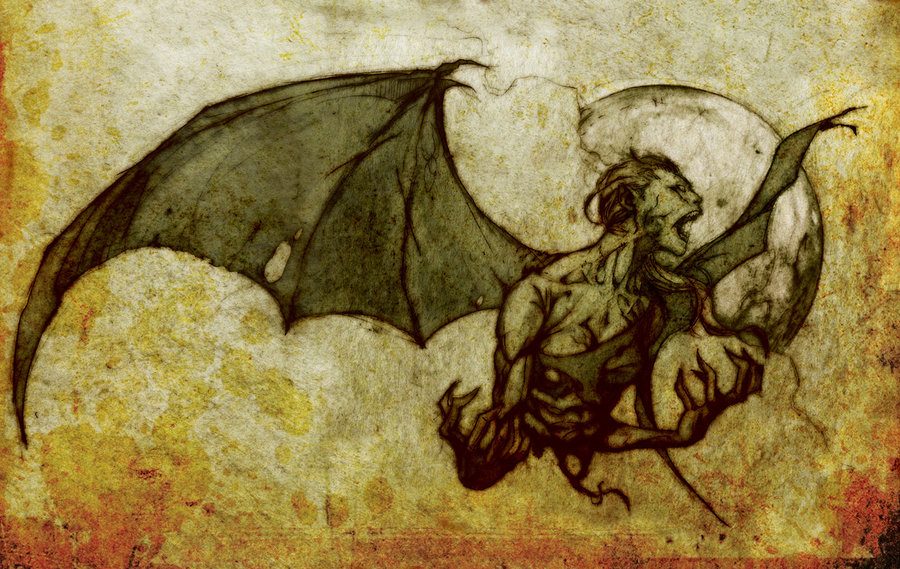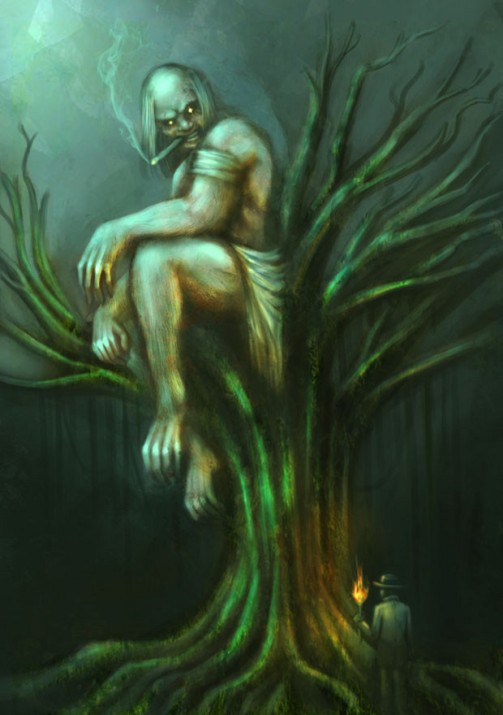
Iphigene here.
Like most Filipino kids, I grew up in fear of midnight creatures coming to take me away and feed on me. In my generation and for those before me, growing up being told stories of local monsters (aswangs, tikbalangs, and kapres) before bedtime was usual. While we fear these creatures, we devoured the stories told by our grandparents and nannies. These stories were told not as fiction, but as real events passed on from neighbor to neighbor—a reality of life in the rural areas where trees grow thick and evenings are dark and mysterious. As an adult, these stories have become an interest. Myra could attest to this, as back in the day when she was my professor in college, I had written a paper on Aswangs and the supernatural elements in this world. Yet, this love and fascination for monsters and beasts isn’t limited to a few people. In childhood, we all gravitated towards these creatures of the dark, both in fear and curiosity. Which leads us to ask: Why is the fascination for these monsters and beasts of the dark a natural part of growing up? Do children not fear them?
While the social scientist in me would love to conduct interviews and study this with greater scrutiny, I will have to limit myself to how far my speculation could go.
Children’s minds are designed to wonder, to fascinate and to believe. It is in childhood, that we have imaginary friends, where Santa Claus is real and angels exist. In this space, where such wonderful creatures are believable, the creatures of the night co-exist alongside them. And so, as much as children celebrate the wonder, the curiosity towards those that lurk in the dark is equally great.
Why be drawn to these dark beasts? Aren’t children suppose to be afraid?
For Knowledge
I think of my childhood, and as much as I would huddle close to my sisters as our nanny told us stories of flying creatures seeking to suck the blood out of me, I insisted on staying. I insisted on hearing it all out and maybe this is the courage and innocence of childhood. We want to know and believe that the more we know, we become familiar and maybe become more watchful of them. The dark after all is too homogenous and huge, without light, we cannot discriminate one from another. Yet, as we peer closer and adjust our eyes to the darkness, we learn to differentiate. To discern one thing from another requires knowing them and maybe this is what children do.
I remember the stories on the mananangal, half bodied flying creatures with long spindle like tongues whose main diet are human innards. They would latch themselves on the roof, create a tiny whole and slide their tongues down targeting its human prey’s abdominal area. According to legend, one way to be safe of this is to lie on your side, creating a natural protection for the abdominal area. This little piece of knowledge made me feel secure when tabloids back in the day were talking about mananangal sighting in Manila.
For Bravery
Fear brings out the adrenalin, there is excitement, yet it is almost always a dare among children. We listen to the stories, we immerse ourselves in these dark, mythical and scary tales and watch which of us will give in to the fear first. And because there is bravery in numbers, the more of us present in the storytelling, the braver we become.
For Wonder
But beyond knowledge and bravery, I think children appreciate the different, the fantastical, more than we adults do. There is something gruesome and beautiful about beasts, monsters and chimeras. They are visions of the imagination. For one, I know, my continuous fascination for these creatures has more than anything had to do with their appearance. Their structures, movements and the physiology of their appearance never seem to bore me.
In the end, I suppose our love for these monsters is rooted in our childhood belief in the possibility of things existing in the unseen. Where the darkness, while fearsome, holds secrets that our natural curiosity is compelled to discover and know. And for those who are brave, we open the doors to a world where monsters and beasts exist.
So, as I end this post, I will give praise to the monsters that have accompanied my childhood and adulthood. For our local folklore isn’t short of monsters that no number of sphinxs, werewolves, and whatnot can make me belittle the beasts of Philippine Folklore.

(Click image to source)

(Click Image to source)

(Click Image to Source)
And while there are no real answers to our love for these monsters, I can only speculate that deep within us we too wonder how these stories came to be, what mind conjured them and if there is any truth to these stories long told from generation to generation. Until we find answers, while we consider all of these as makings of an over imaginative mind, we cannot help wonder, even if its just a sliver of wonder if these things do exist somewhere in the unexplored dark.

What’s an Aswang? Just curious. Great post!
LikeLike
Hi Erik,
Aswangs is a general category used here in the Philippines that refer to creatures/monster that can take on the human form. Its quite a wide category. Some use the word “aswang” to pertain to people who practice witchcraft. Others use it to describe self-segmenting creatures that flies at night. While others describe them as people who assume other forms, like dogs, pig, horse and carabao and prey on sick people or pregnant women.
The more popular association though is the self-segmenting, flying creatures that eat the innards of human beings.
hope that made it clear.
thanks for dropping by erik. 🙂
LikeLike
Thanks! That’s REALLY creepy… maybe I didn’t want to know! 😉
LikeLike
Pingback: [Monday Reading] Of Darkness and Shadows – “The Dark” and “The Shadow” |
Oh wow, this brings back childhood memories…of sleepless nights. Haha. But you’re right, our local folklore is very rich. I am glad that these beloved mythological monsters are making their way into some really awesome local graphic novels here. Plus the aswang was featured in an episode of the TV series Grimm too. So, hooray for monsters! 🙂
LikeLike
Hi Tin,
Unconsciously, I’ve become a collector of all things related to our local mythology. I’m attracted at both nonfiction works on them, as well as how writers incorporate our myth into their creative stories. I think The Mythology Class by Arnold Arre got me into this, reading that in High School just made all our folklore come alive.
I’m hoping to get a copy of Mythspace soon.
And yes hooray for monsters!
-iphigene
LikeLike